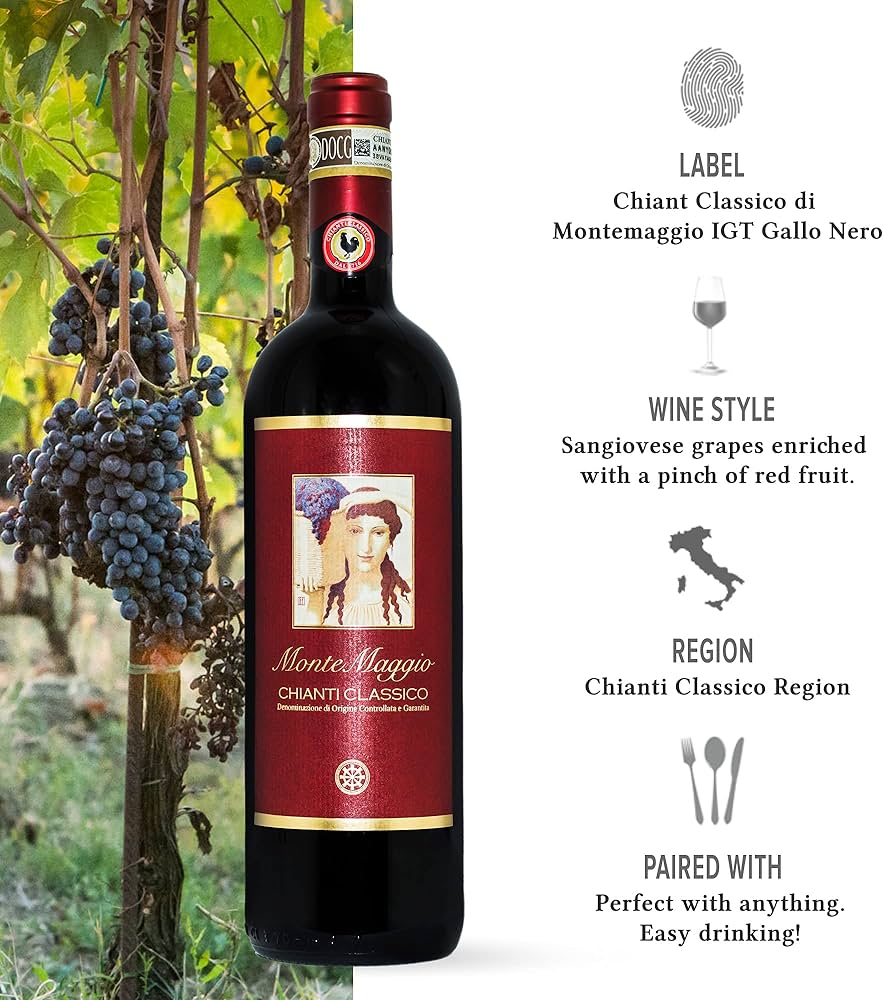
When you see the letters DOCG on an Italian wine label, it means the wine is certified at the highest level of quality recognition in Italy.
DOCG stands for “Denominazione di Origine Controllata e Garantita” — Denomination of Controlled and Guaranteed Origin.
It indicates that the wine was produced in a specific region, under strict rules about grape varieties, yields, aging, and style, and that every batch has been officially tasted and approved before release.
📖 A Short History of DOCG
-
Italy introduced the DOC (Denominazione di Origine Controllata) system in 1963 to protect wines tied to their territories.
-
By the 1980s, some wines needed even stricter rules → DOCG was created.
-
The first DOCG wines were Brunello di Montalcino, Barolo, Barbaresco, and Chianti Classico.
-
Today, DOCG status represents the pinnacle of Italian winemaking.
🛠️ How DOCG Works
To be labeled DOCG, a wine must:
-
Come from a defined geographic zone (ex. Chianti Classico between Florence and Siena).
-
Follow strict production rules (grape varieties, vineyard practices, winemaking methods).
-
Respect yield limits → lower yields ensure higher quality.
-
Undergo chemical and sensory analysis → each batch is tasted and certified by a government-approved commission.
-
Be bottled in the production area → to preserve authenticity.
Every DOCG bottle carries a numbered government seal across the neck, a guarantee of authenticity.
🍇 Examples of DOCG Wines
-
Chianti Classico DOCG → iconic Tuscan Sangiovese with the Black Rooster symbol.
-
Brunello di Montalcino DOCG → powerful, long-aging red from 100% Sangiovese.
-
Barolo DOCG → Nebbiolo-based “king of wines” from Piedmont.
-
Prosecco Superiore DOCG → sparkling wine from Conegliano-Valdobbiadene.
🌍 Why DOCG Matters
DOCG is more than a label — it represents:
-
Traceability: every bottle can be tracked back to its origin.
-
Authenticity: prevents fraud and imitations.
-
Quality assurance: a guarantee that standards are met.
-
Territory identity: DOCG wines are ambassadors of their regions.
📖 Glossary
-
DOC → Denominazione di Origine Controllata (Controlled Origin) — important but one step below DOCG.
-
IGT → Indicazione Geografica Tipica, broader and more flexible, often used for “Super Tuscan” wines.
-
Consorzio → Consortium of producers who safeguard and promote a DOCG area.
❓ FAQ
1. Is DOCG always better than DOC?
Not necessarily, but DOCG indicates stricter regulations. Many DOC wines are excellent, but DOCG wines generally have more guarantees.
2. How can I spot DOCG on the bottle?
Look for the DOCG band/seal across the cork or capsule, usually with a number.
3. Are all Chianti wines DOCG?
Yes, but only Chianti Classico DOCG comes from the historic area and carries the Black Rooster symbol.
4. Does DOCG mean organic?
No, DOCG refers to origin and rules. Organic certification is a separate standard. Wineries like Fattoria di Montemaggio combine both: DOCG quality and fully organic practices.






Leave a Reply